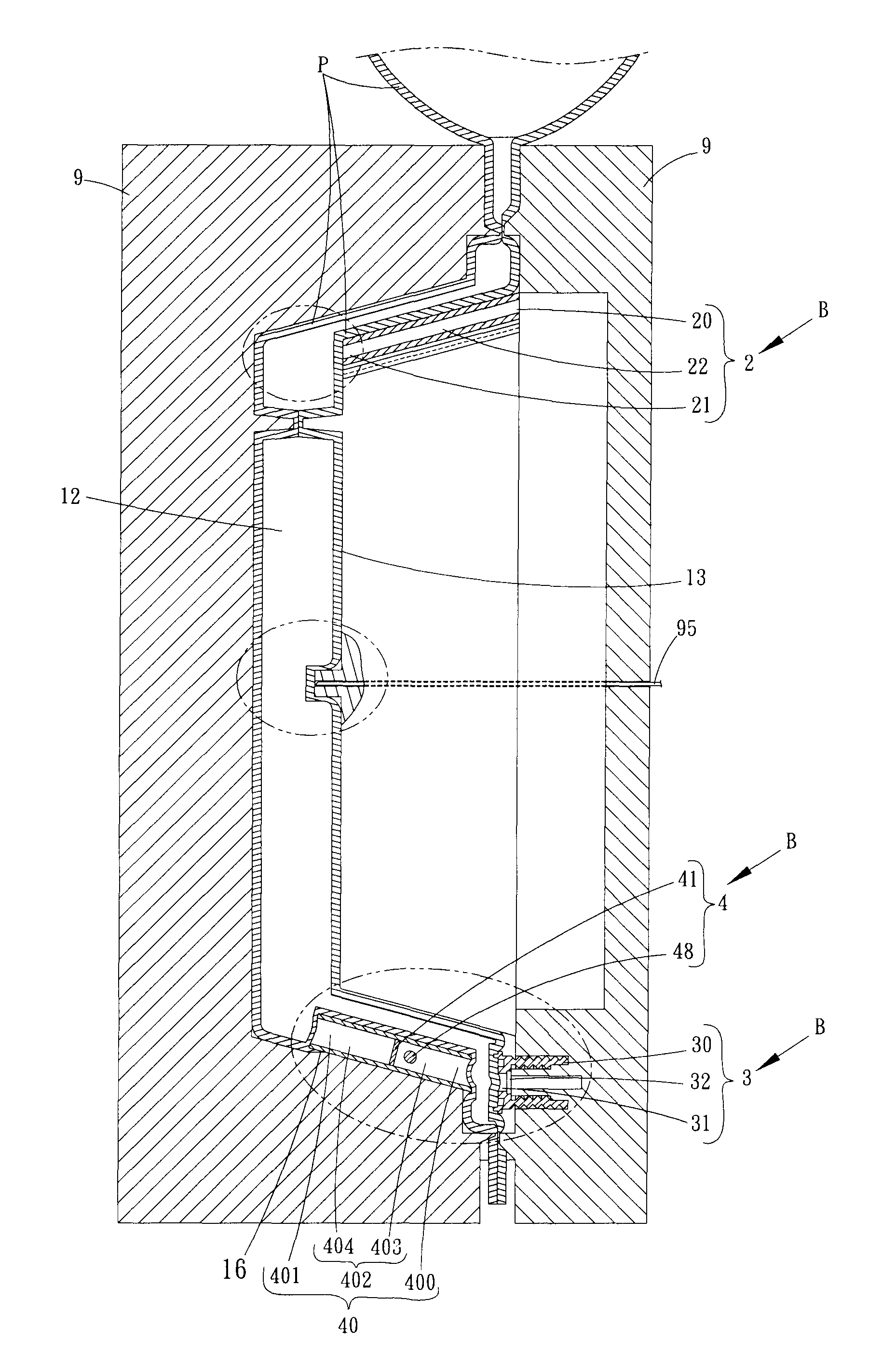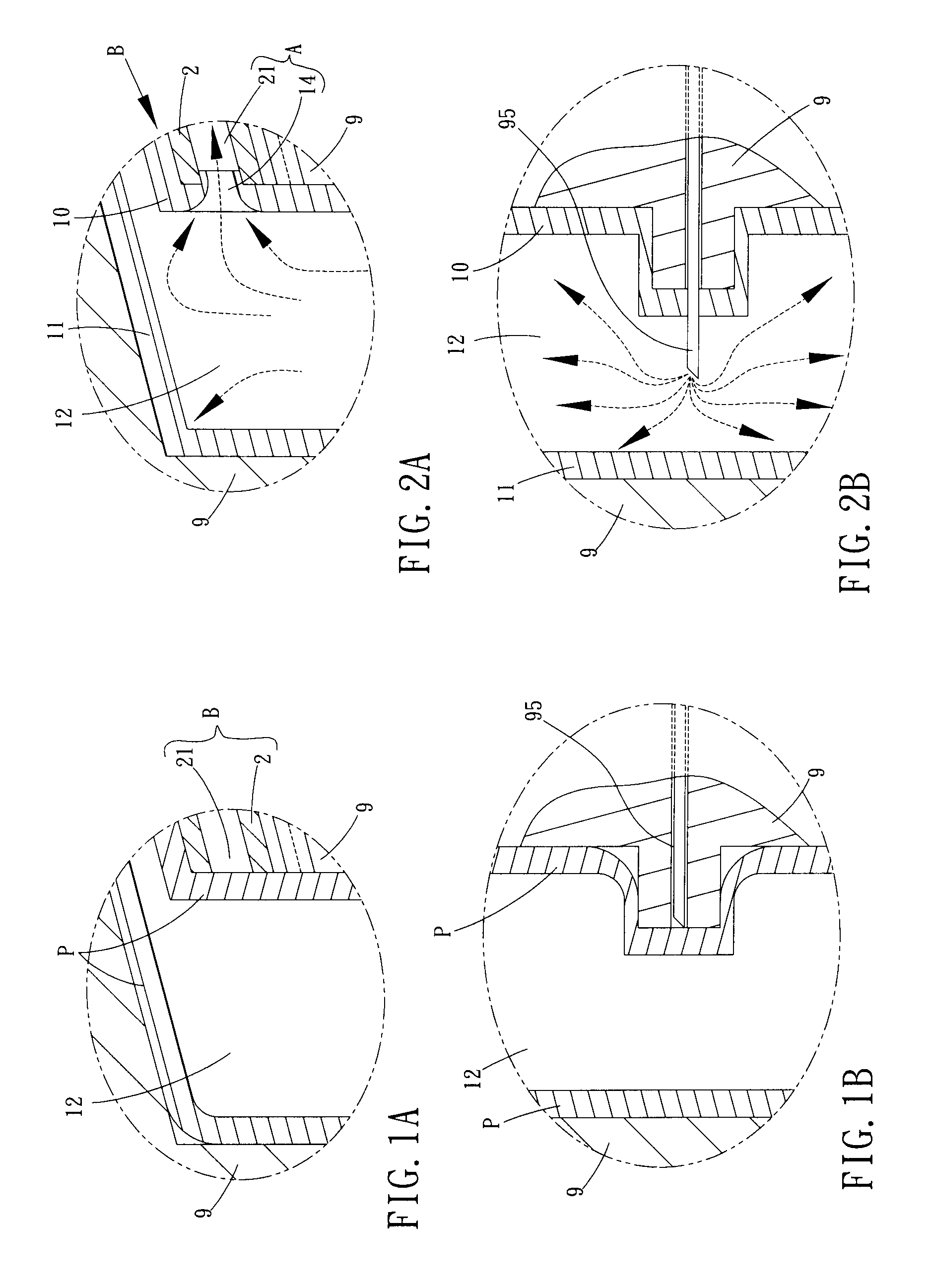Hollow pot
a pot and lid technology, applied in the field of pots, can solve the problems of leakage of water that cannot be absorbed by the soil, difficult cleaning, and noise generation of leakag
- Summary
- Abstract
- Description
- Claims
- Application Information
AI Technical Summary
Benefits of technology
Problems solved by technology
Method used
Image
Examples
Embodiment Construction
[0025]Referring to FIGS. 1 to 11, the hollow pot of the present invention comprises a pot unit 1 and a connection unit B.
[0026]The pot unit 1 has an inner layer 10 with a recessed reception area 13 defined therein, an outer layer 11 supporting the inner layer 10, and a space 12 located between the inner and outer layers 10, 11. A through hole 133 is located in communication between the reception area 13 and the space 12. A water introducing unit 3 is located in communication between the space 12 and outside of the pot unit 1. A seal unit 6 seals the water introducing unit 3, and a path A communicates between the space 12 and the outside of the pot unit 1. The reception area 13 of the inner layer 10 has a recessed area 131 and at least one through hole 133 is defined in the recessed area 131. The through hole 133 communicates with the space 12. The through hole 133 is integrally formed simultaneously with the formation of the pot unit 1, or the through hole 133 is formed by drilling ...
PUM
| Property | Measurement | Unit |
|---|---|---|
| transparent | aaaaa | aaaaa |
| temperature | aaaaa | aaaaa |
| humidity | aaaaa | aaaaa |
Abstract
Description
Claims
Application Information
 Login to View More
Login to View More - R&D
- Intellectual Property
- Life Sciences
- Materials
- Tech Scout
- Unparalleled Data Quality
- Higher Quality Content
- 60% Fewer Hallucinations
Browse by: Latest US Patents, China's latest patents, Technical Efficacy Thesaurus, Application Domain, Technology Topic, Popular Technical Reports.
© 2025 PatSnap. All rights reserved.Legal|Privacy policy|Modern Slavery Act Transparency Statement|Sitemap|About US| Contact US: help@patsnap.com



